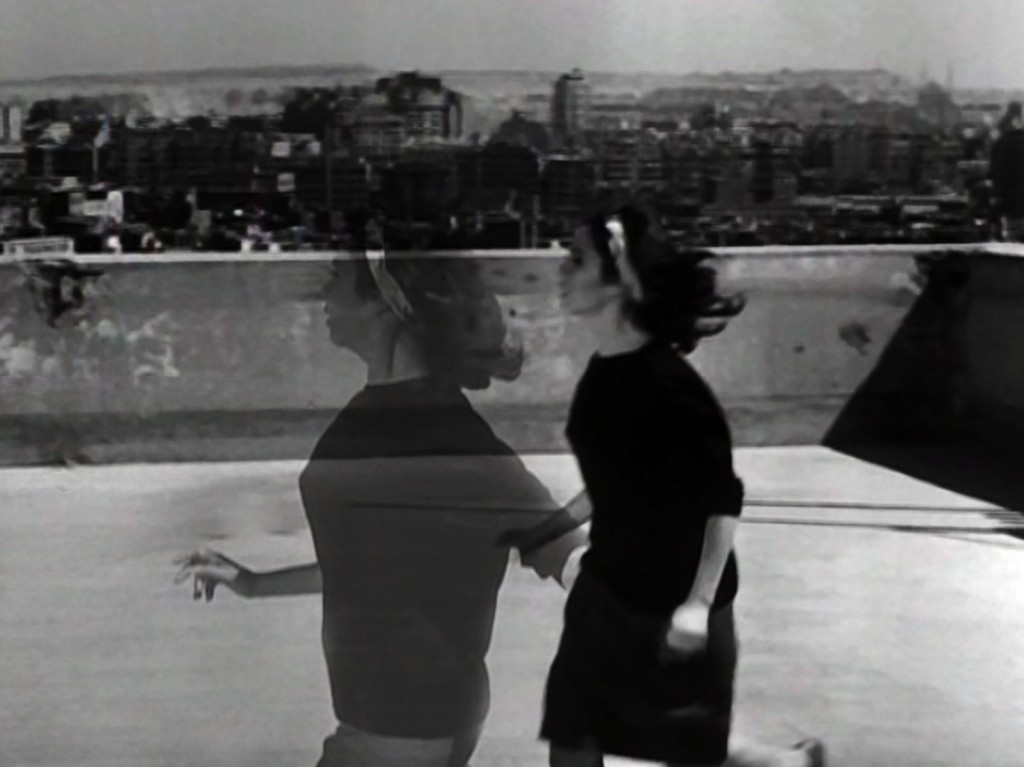Blight
24 July – 6 August
John Smith
1996, 16mm film transferred to video, 4:3, colour, stereo sound; 14 mins
“Blight was made in collaboration with composer Jocelyn Pook. It revolves around the building of the M11 Link Road in East London, which provoked a long and bitter campaign by local residents to protect their homes from demolition. Until 1994, when our houses were destroyed, both the composer and I lived on the route of this road. The images in the film are a selective record of some of the changes which occurred in the area over a two-year period, from the demolition of houses through to the start of motorway building work. The soundtrack incorporates natural sounds associated with these events together with speech fragments taken from recorded conversations with local people. Although the film is entirely constructed from records of real events, Blight is not a straightforward documentary. The film constructs stories from unconnected fragments of sound and image, bringing disparate reminiscences and contemporary events together. Like much of my earlier work, Blight exploits the ambiguities of its material to produce new meanings and metaphors, fictionalizing reality through framing and editing strategies. The emotive power of music is used in the film to overtly aid this invention, investing mundane images with artificial importance. A specific ‘real’ context for the depicted events only becomes apparent at the end of the film. What is presented is simultaneously fact and fiction.” John Smith
”In the first few minutes of his film Blight, derelict houses appear to be dismembering themselves. Bricks rattle, mortar falls, and wooden beams are dislodged, seemingly by poltergeist activity (a feeling reinforced by a poster for the film The Exorcist, on a bedroom wall that has become newly exposed to daylight). The claw of a bulldozer is filmed, ominously caressing a chimney stack it is about to tear down. But the shot stops short, and the inevitable destruction happens in our heads, not on the screen. The restraint of John’s editing beautifully undercuts the emotive quality of the music (composed by his collaborator Jocelyn Pook), and the music in turn replaces the drama that hits the cutting room floor.” Cornelia Parker ‘John Smith’s Body’ in John Smith: Film and Video Works 1972-2002.
AWARDS FOR BLIGHT
14th Hamburg International Short Film Festival, Germany, 1998 Best International Short Film
42nd Cork International Film Festival, Ireland, 1997 Best European Short Film
40th Leipzig International Documentary and Animation Festival, Germany. 1997 Golden Dove (best short documentary)
33rd Chicago International Film Festival, USA, 1997 Gold Plaque (best experimental film)
16th Uppsala International Short Film Festival, Sweden. Film Jackdaw (best experimental film)
43rd Oberhausen International Short Film Festival, Germany, 1997 Prix Regional and Youth Film Prize
3rd International Biennale of Film and Architecture, Graz, Austria, 1997 Special Critics Award
2nd Bangkok Experimental Film Festival, Thailand, 1999 Audience Prize
BIO
John Smith was born in Walthamstow, East London in 1952 and studied film at the Royal College of Art. Initially inspired by conceptual art and the structural materialist ideas that dominated British artists’ filmmaking during his formative years, but also fascinated by the immersive power of narrative and the spoken word, he has developed an extensive body of work that deftly subverts the perceived boundaries between documentary and fiction, representation and abstraction. Often rooted in everyday life, Smith’s meticulously crafted films rework and transform reality, playfully exploring and exposing the language of cinema.
Since 1972 John Smith has made over fifty film, video and installation works that have been shown in cinemas, art galleries and on television around the world and awarded major prizes at many international film festivals. His solo exhibitions include Figge von Rosen Gallery, Cologne (2013), Tanya Leighton Gallery, Berlin (2013), Kestnergesellschaft, Hanover (2012), Turner Contemporary, Margate (2012), Weserburg Museum for Modern Art, Bremen (2012), Uppsala Art Museum, Sweden (2011), PEER Gallery, London (2011), Pallas Projects, Dublin (2011), Royal College of Art Galleries, London (2010), Tanya Leighton Gallery, Berlin (2010), Sala Diaz Gallery, Texas (2010), Ikon Gallery, Birmingham (2006), Kunstmuseum Magdeburg (2005), Open Eye Gallery, Liverpool (2003) and Pearl Gallery, London (2003). Major group shows include ‘Constellations’, Tate Liverpool (2013-14), ‘Image Counter Image’, Haus der Kunst, Munich (2012), ‘Has The Film Already Started?’, Tate Britain (2011-12), Berlin Biennial (2010), ‘The Talent Show’, Walker Art Center, Minneapolis and MoMA PS1, New York (2010), Venice Biennale (2007), ‘A Century of Artists’ Film in Britain’, Tate Britain (2004), ‘Live in Your Head: Concept and Experiment in Britain 1965-75’, Whitechapel Gallery, London (2000) and ‘The British Art Show’, UK touring exhibition (1984). John Smith regularly presents his work in person and in recent years it has been profiled through retrospectives at film festivals in Oberhausen, Tampere, St. Petersburg, La Rochelle, Mexico City, Uppsala, Cork, Regensburg, Karlstad, Winterthur, Bristol, Hull and Glasgow.
John Smith lives and works in London. He teaches part-time at the University of East London where he is Professor of Fine Art. In 2011 he received a Paul Hamlyn Foundation Award for Artists and in 2013 he was the winner of Film London’s Jarman Award. His work is held in numerous collections including Arts Council England, Tate Gallery, Ella Fontanals-Cisneros, Kunstmuseum Magdeburg, Ferens Art Gallery and Wolverhampton Art Gallery. He is represented by Tanya Leighton Gallery, Berlin.
FILMOGRAPHY
LINKS
CREDITS


